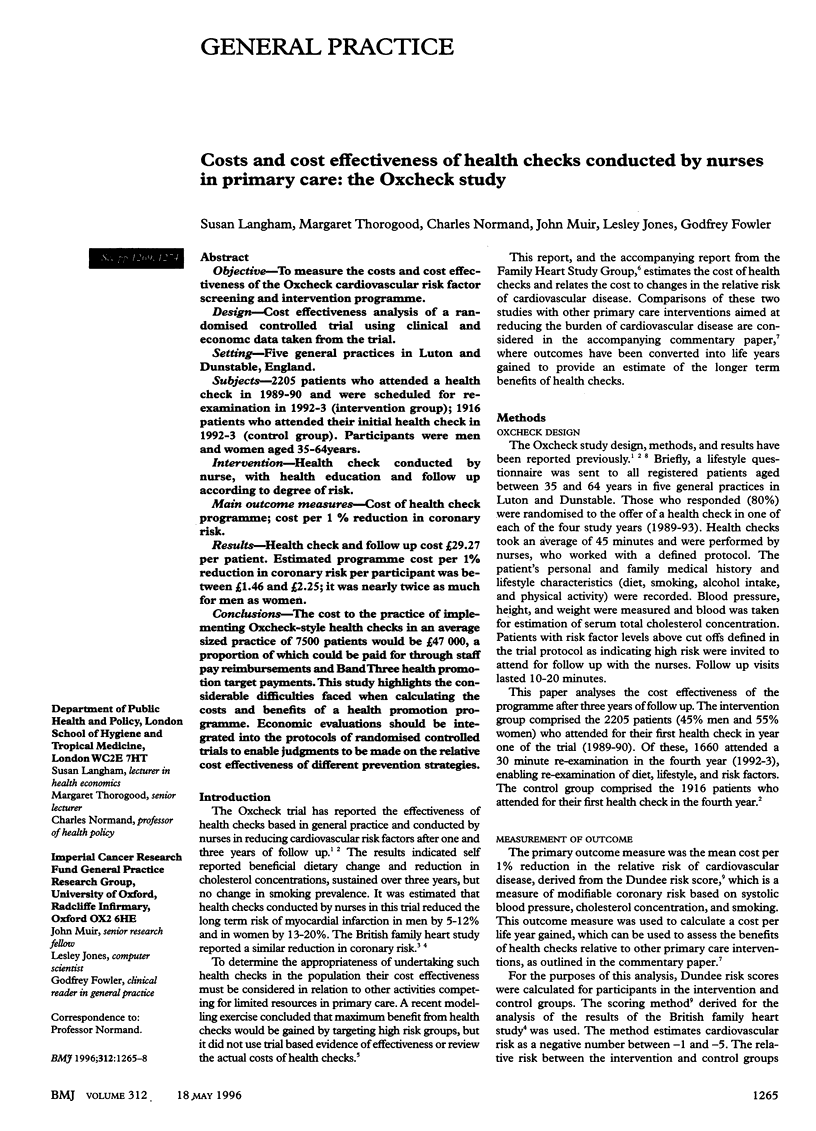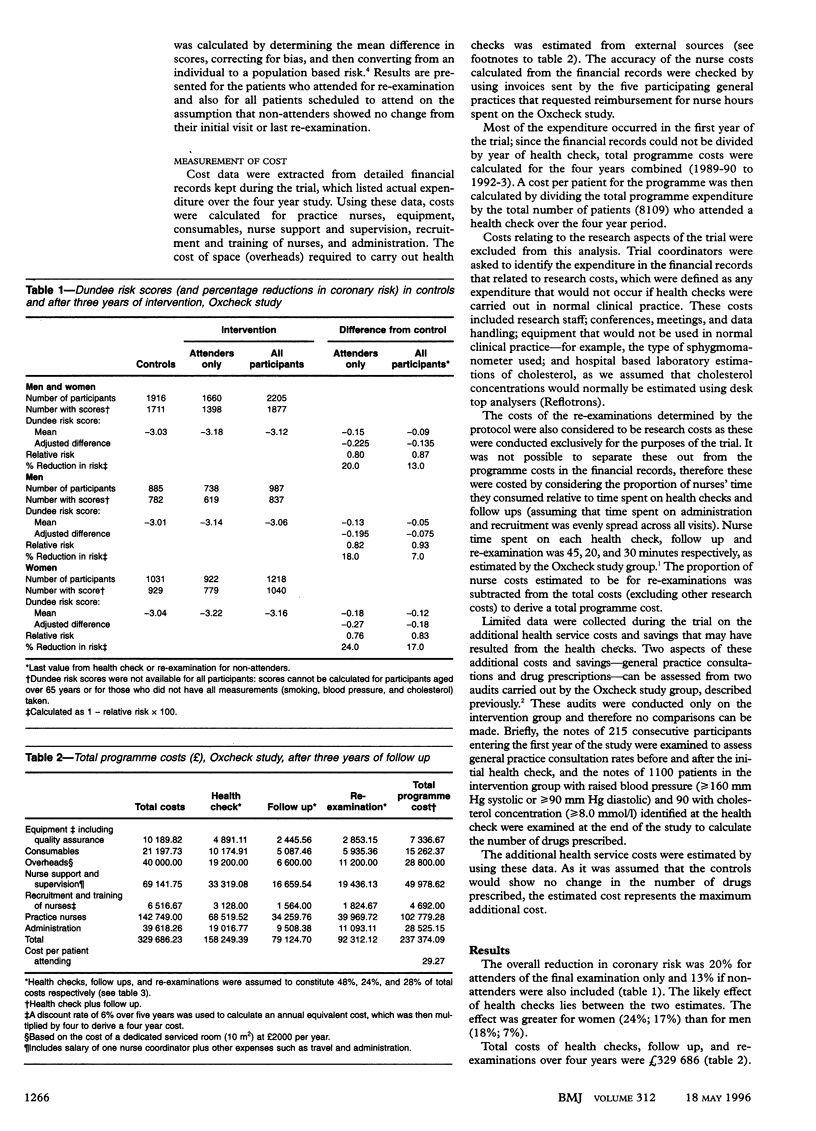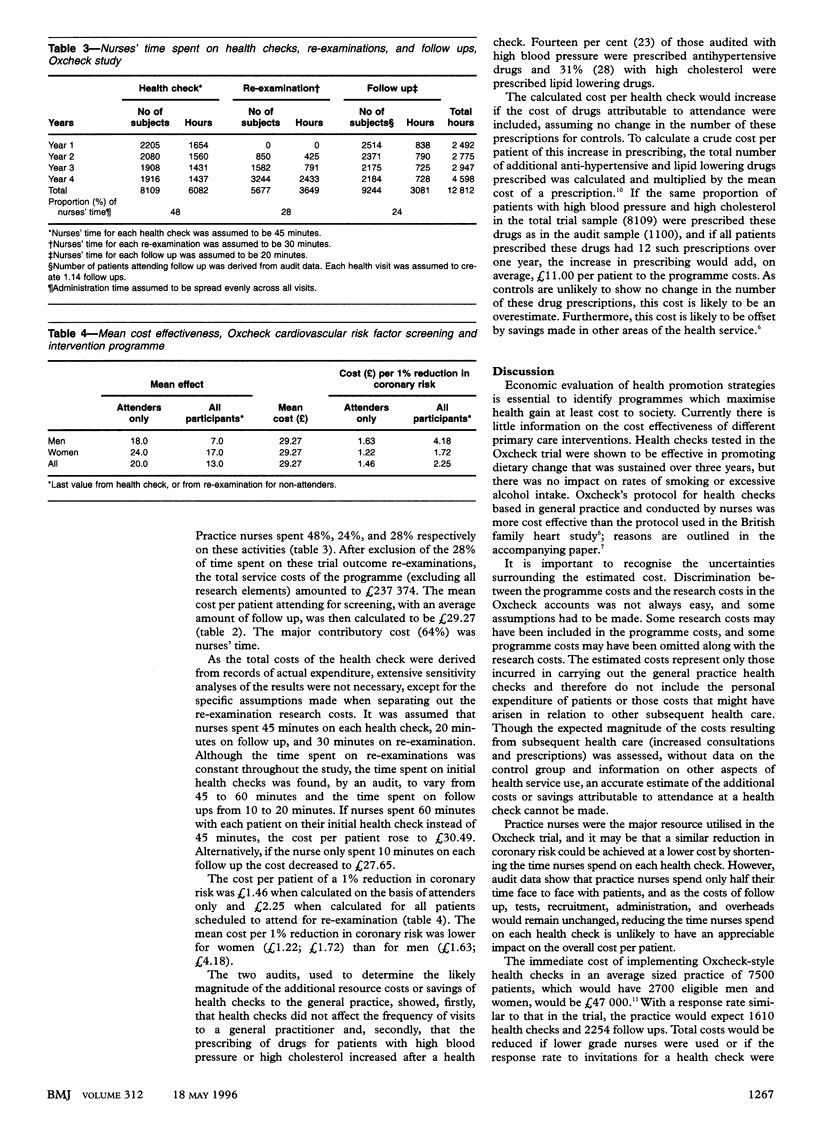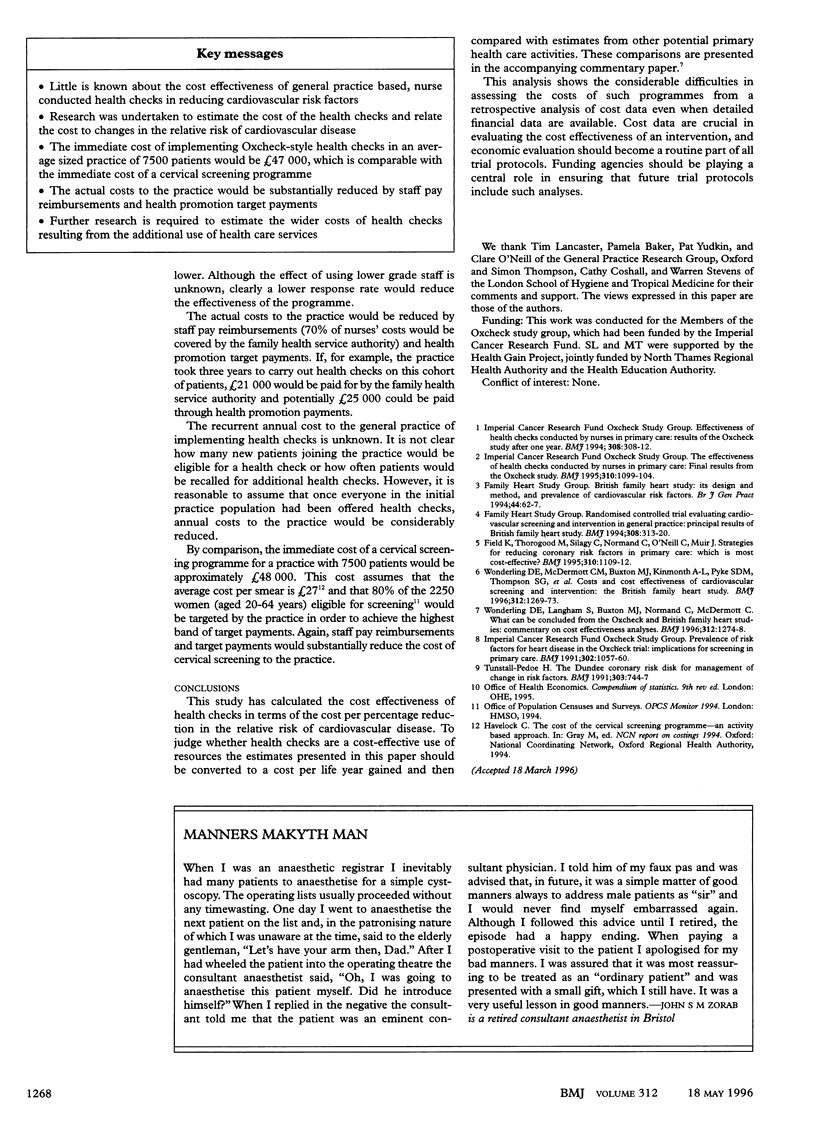Abstract
OBJECTIVE--To measure the costs and cost effectiveness of the Oxcheck cardiovascular risk factor screening and intervention programme. DESIGN--Cost effectiveness analysis of a randomised controlled trial using clinical and economic data taken from the trial. SETTING--Five general practices in Luton and Dunstable, England. SUBJECTS--2205 patients who attended a health check in 1989-90 and were scheduled for re-examination in 1992-3 (intervention group); 1916 patients who attended their initial health check in 1992-3 (control group). Participants were men and women aged 35-64 years. INTERVENTION--Health check conducted by nurse, with health education and follow up according to degree of risk. MAIN OUTCOME MEASURES--Cost of health check programme; cost per 1% reduction in coronary risk. RESULTS--Health check and follow up cost 29.27 pounds per patient. Estimated programme cost per 1% reduction in coronary risk per participant was between 1.46 pounds and 2.25 pounds; it was nearly twice as much for men as women. CONCLUSIONS--The cost to the practice of implementing Oxcheck-style health checks in an average sized practice of 7500 patients would be 47,000 pounds, a proportion of which could be paid for through staff pay reimbursements and Band Three health promotion target payments. This study highlights the considerable difficulties faced when calculating the costs and benefits of a health promotion programme. Economic evaluations should be integrated into the protocols of randomised controlled trials to enable judgments to be made on the relative cost effectiveness of different prevention strategies.
Full text
PDF



Selected References
These references are in PubMed. This may not be the complete list of references from this article.
- Field K., Thorogood M., Silagy C., Normand C., O'Neill C., Muir J. Strategies for reducing coronary risk factors in primary care: which is most cost effective? BMJ. 1995 Apr 29;310(6987):1109–1112. doi: 10.1136/bmj.310.6987.1109. [DOI] [PMC free article] [PubMed] [Google Scholar]
- Tunstall-Pedoe H. The Dundee coronary risk-disk for management of change in risk factors. BMJ. 1991 Sep 28;303(6805):744–747. doi: 10.1136/bmj.303.6805.744. [DOI] [PMC free article] [PubMed] [Google Scholar]
- Wonderling D., Langham S., Buxton M., Normand C., McDermott C. What can be concluded from the Oxcheck and British family heart studies: commentary on cost effectiveness analyses. BMJ. 1996 May 18;312(7041):1274–1278. doi: 10.1136/bmj.312.7041.1274. [DOI] [PMC free article] [PubMed] [Google Scholar]
- Wonderling D., McDermott C., Buxton M., Kinmonth A. L., Pyke S., Thompson S., Wood D. Costs and cost effectiveness of cardiovascular screening and intervention: the British family heart study. BMJ. 1996 May 18;312(7041):1269–1273. doi: 10.1136/bmj.312.7041.1269. [DOI] [PMC free article] [PubMed] [Google Scholar]


